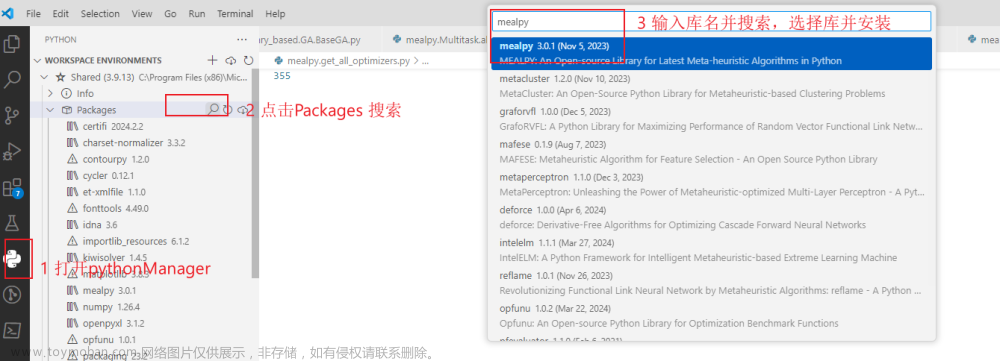C++算法库
算法库提供大量用途的函数(例如查找、排序、计数、操作),它们在元素范围上操作。
》》概念约束
》》ranges标准库
C++20 在命名空间 std::ranges 中提供大多数算法的受约束版本,在这些算法中,范围既可以由迭代器-哨位对,也可以由单个 range 实参指定,还支持投影和成员指针可调用对象。
std::vector<int> v {7, 1, 4, 0, -1};
std::ranges::sort(v); // 受约束算法
- 头文件
#include <algorithm>
#include <numeric>
#include <memory>
#include <ranges> //C++20
批量操作
for_each
应用函数到范围中的元素
std::vector<int> v {3, -4, 2, -8, 15, 267};
auto print = [](const int& n) { std::cout << n << ' '; };
std::for_each(v.cbegin(), v.cend(), print);//3 -4 2 -8 15 267
std::for_each(v.begin(), v.end(), [](int &n){ n++; });
std::for_each(v.cbegin(), v.cend(), print);//4 -3 3 -7 16 268
- 应用ranges
std::vector<int> nums{3, 4, 2, 8, 15, 267};
auto print = [](const auto& n) { std::cout << ' ' << n; };
std::ranges::for_each(std::as_const(nums), print);//3 4 2 8 15 267
std::ranges::for_each(nums, [](int &n){ n++; });
std::ranges::for_each(std::as_const(nums), print);// 4 5 3 9 16 268
for_each_n
应用一个函数对象到序列的前 n 个元素
std::vector<int> v {3, -4, 2, -8, 15, 267};
std::for_each_n(v.begin(), 3, [](int &n){ n++; });
//4 -3 3 -8 15 267
- ranges
std::vector<int> nums{3, 4, 2, 8, 15, 267};
std::ranges::for_each_n(nums.begin(), 3, [](int &n){ n++; });
//4 5 3 8 15 267
搜索操作
all_of ,any_of ,none_of
检查谓词是否对范围中所有、任一或无元素为 true
- all_of 所有是否满足条件
- any_of 至少有一个满足
- none_of 没有一个满足
std::vector<int> v2 {10 , 2};
if (std::all_of(v2.begin(), v2.end(), [](int i) { return i % 2 == 0; }))
std::cout << "All numbers are even\n"; //true
if (std::none_of(v2.begin(), v2.end(), [](int i) { return i % 2 == 0; }))
std::cout << "None of them are odd\n"; //false
if (std::any_of(v2.begin(), v2.end(), [](int i) { return i % 2 == 0; }))
std::cout << "At least one number is odd\n"; //true
- ranges
std::vector<int> v2 {10 , 2};
if (std::ranges::all_of(v2, [](int i) { return i % 2 == 0; }))
std::cout << "All numbers are even\n"; //true
if (std::ranges::none_of(v2, [](int i) { return i % 2 == 0; }))
std::cout << "None of them are odd\n"; //false
if (std::ranges::any_of(v2, [](int i) { return i % 2 == 0; }))
std::cout << "At least one number is odd\n"; //true
find, find_if, find_if_not
寻找首个满足特定判别标准的元素
- find 寻找首个为x的元素
- find_if 寻找首个为true的元素
- find_if 寻找首个为false的元素
std::distance(v.begin(), x)返回出现位置
std::vector<int> v {3, -4, 2, -8, 15, 267};
auto x = std::find(v.begin(),v.end(),3);
if(x != v.end())
std::cout << "v 包含" << std::distance(v.begin(), x); // 0
auto y = std::find_if(v.begin(),v.end(), [](int i) { return i % 2 == 0; });
if(y != v.end())
std::cout << "v " << std::distance(v.begin(), y); // 1
auto z = std::find_if_not(v.begin(),v.end(), [](int i) { return i % 2 == 0; });
if(z != v.end())
std::cout << "v " << std::distance(v.begin(), z); // 0
- ranges
std::vector<int> v {3, -4, 2, -8, 15, 267};
auto x = std::ranges::find(v,3);
if(x != v.end())
std::cout << "v 包含" << std::distance(v.begin(), x); // 0
auto y = std::ranges::find_if(v, [](int i) { return i % 2 == 0; });
if(y != v.end())
std::cout << "v " << std::distance(v.begin(), y); // 1
auto z = std::ranges::find_if_not(v, [](int i) { return i % 2 == 0; });
if(z != v.end())
std::cout << "v " << std::distance(v.begin(), z); // 0
find_end
在特定范围中寻找最后出现的元素序列
std::vector<int> v {1,2,3,1,2,3,4,5,6};
vector<vector<int>> v2 = {{1, 2, 3}, {3, 4, 5}};
for(auto x : v2){
auto t = std::find_end(v.begin(), v.end(), x.begin() , x.end());
std::cout << std::distance(v.begin(), t);//3 5
}
std::find_first_of
在范围 [first, last) 中搜索范围 [s_first, s_last) 中的任何元素
std::vector<int> v {1,2,3,1,2,3,4,5,6};
vector<vector<int>> v2 = {{1, 2, 3}, {3, 4, 5}};
for(auto x : v2){
auto t = std::find_first_of(v.begin(), v.end(), x.begin() , x.end());
std::cout << std::distance(v.begin(), t);//0 2
}
adjacent_find
查找首对相邻的相同(或满足给定谓词的)元素
std::vector<int> v1{0, 1, 2, 3, 40, 40, 41, 41, 5};
auto i1 = std::adjacent_find(v1.begin(), v1.end());
if (i1 == v1.end())
std::cout << "没有匹配的相邻元素\n";
else
std::cout << "第一对相等的相邻元素位于 "
<< std::distance(v1.begin(), i1) << ",*i1 = "
<< *i1 << '\n';
count, count_if
- count x个数
- count_if 满足表达式为true的个数
std::vector<int> v = {1, 2, 3, 4, 4, 3, 7, 8, 9, 10};
std::cout << std::count(v.begin(),v.end(),3);//2
std::cout << std::count_if(v.begin(),v.end(),[](int i) { return i % 2 == 0; });//偶数个数 5
string s = "aabbbbcccccccc";
std::cout << std::count(s.begin(),s.end(),'c');//8
- ranges
std::vector<int> v = {1, 2, 3, 4, 4, 3, 7, 8, 9, 10};
std::cout << std::ranges::count(v,3);//2
std::cout << std::ranges::count_if(v,[](int i) { return i % 2 == 0; });//偶数个数 5
string s = "aabbbbcccccccc";
std::cout << std::ranges::count(s,'c');//8
equal
确定两个元素集合是否是相同的
string a = "xyz";
string b = "xyz";
if(std::equal(a.begin(),a.end(),b.begin(),b.end()))
std::cout << "equal";
- ranges
string a = "xyz";
string b = "xyz";
if(std::ranges::equal(a,b))
std::cout << "equal";
search
搜索范围 [first, last) 中首次出现元素序列 [s_first, s_last) 的位置。文章来源:https://www.toymoban.com/news/detail-754579.html
string str = "ddccabcabcabc";
string words = "abc";
auto it = std::search(str.begin(),str.end(),words.begin(),words.end());
std::cout << std::distance(str.begin() , it);//4
search_n
在范围中搜索一定量的某个元素的连续副本
在范围 [first, last) 中搜索 count 个等同元素的序列,每个都等于给定的值 value文章来源地址https://www.toymoban.com/news/detail-754579.html
string str = "1001010100010101001010101";
auto it = std::search_n(str.begin() , str.end() , 3 , '0');
std::cout << std::distance(str.begin() , it); //第一次出现连续的三个零的位置:8
到了这里,关于【C++】算法库(批量操作、搜索操作)的文章就介绍完了。如果您还想了解更多内容,请在右上角搜索TOY模板网以前的文章或继续浏览下面的相关文章,希望大家以后多多支持TOY模板网!









